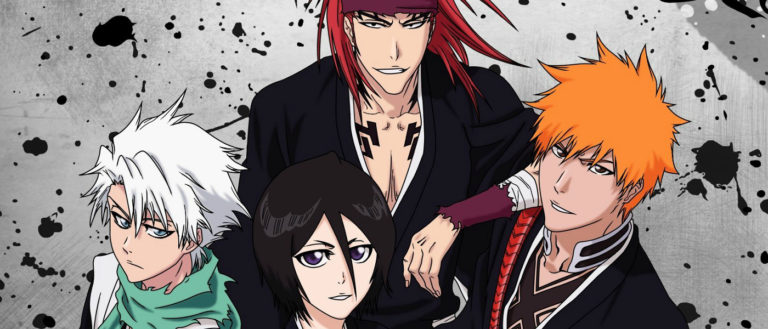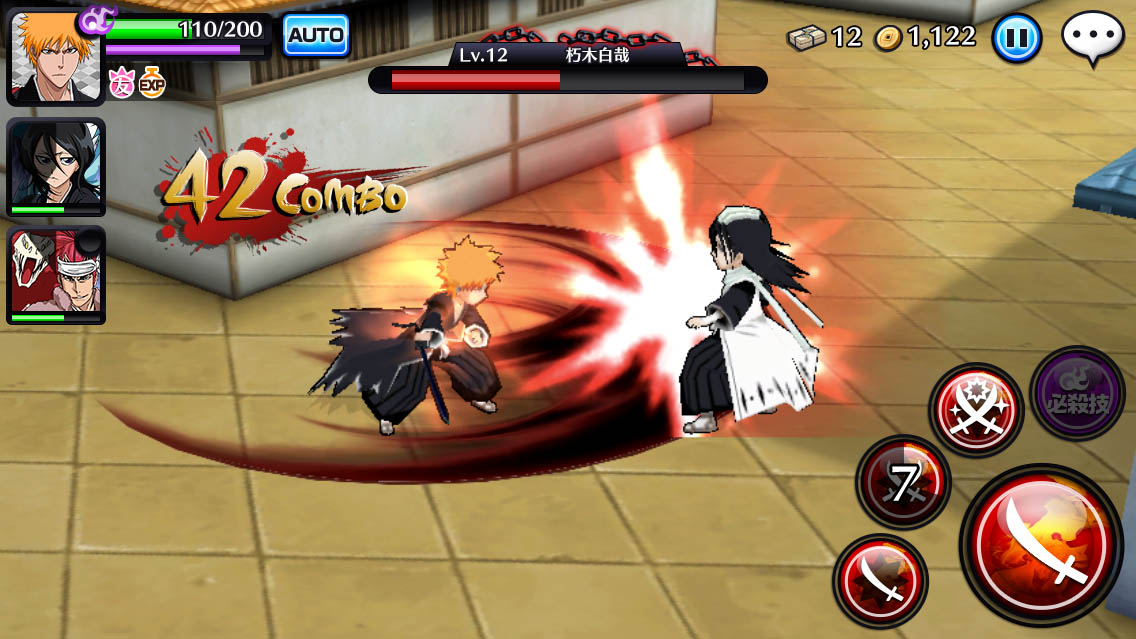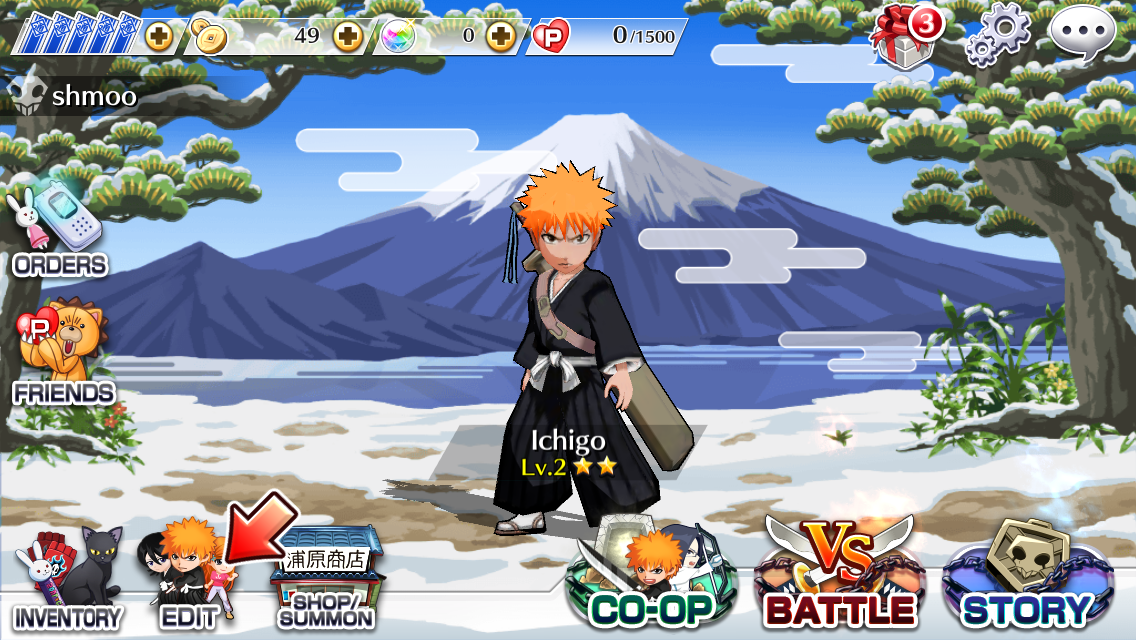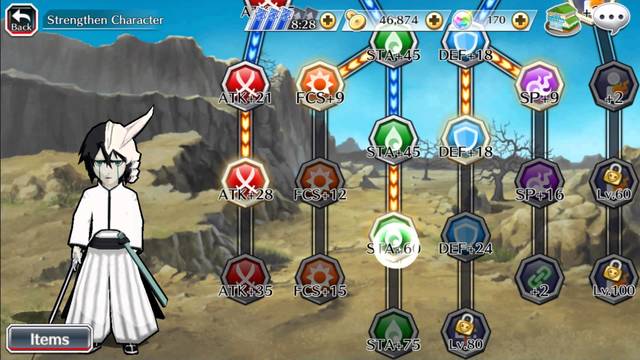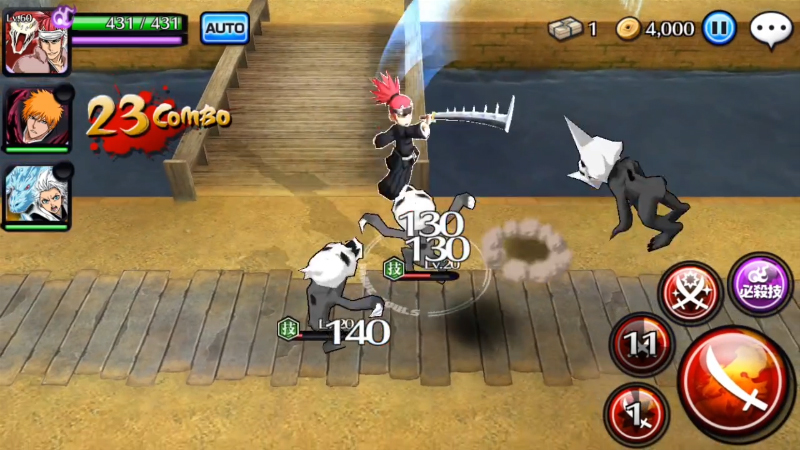Long-time readers of iFanzine are probably already well aware of the fact I personally adore Beat’em Up games, and have generally reacted favorably to them whenever they’ve shown up. What you might not know — however — is that I’m also a massive fan of Tite Kubo’s Bleach, meaning it was quite the pleasant surprise when KLabGames’ Bleach: Brave Souls (free, universal) suddenly arrived in the US. I was — of course — immediately skeptical of this game’s potential worthiness, seeing as how licensed-games rarely equate to quality game-play (especially when IAP-concepts are involved).
To make a long-story short: Bleach: Brave Souls actually is a ton of fun, and furthermore manages to not utterly dash its potential under the eternally looming-specter of dangling IAPs. Although the game might not have quite the subtle game-play complexity of Oozoo Inc’s Brandnew Boy (our review), that finely-honed app didn’t give players the chance to play as virtually any character from Bleach’s immense roster either. However — before I get ahead of myself any further — it’s high time I got this derailed review back on track, and that means first discussing exactly how one actually plays Bleach: Brave Souls.
The game’s basic setup keeps things fairly simple: with the screen’s left-hand side being used as a virtual analog-joystick, and the screen’s right-hand side containing your action buttons. All characters will have access to at least a single attack button, and some — depending on their rarity (which I’ll cover further down) — will have access to even more attack options. Although the basic attack option is always free to use, the other attack options will go into temporary cool-down after being invoked (or may alternatively first require a special power-up be collected).
Additionally you may perform a fast-dodge at any time, which is executed by rapidly swiping across the screen — in the desired direction of the dodge – on your iDevice’s left-hand side. This is extremely useful when one — or more — of your opponents begin flashing, as that’s your brief-warning they’re about to unleash one of their painful attacks (and your basic attacks aren’t able to interrupt these). Enemy attacks may alternatively be circumvented by using one of your selected character’s stronger-attacks, all of which feature wind-up animations during which you’re utterly impervious to being struck.
Speaking of which, you’ll have access to — based on your personal preferences — anywhere from one-to-three different iconic Bleach characters during each and every mission. You may freely swap between these by tapping their icon in the screen’s upper left-hand corner, at least so long as that particular champion hasn’t yet been struck down during your current attempt. Your potentially collectible heroes — by the way — won’t just be limited to characters explicitly acknowledged as “good guys”, with Szayelapporo — Ulqiorra — and even Aizen all being readily available (at least if you find them, that is).
Utilizing these controls you’ll aim to collect a variety of color-coded crystals both from fallen enemies, as well as from smashing various objects in the scenery (after all, it’s not truly a proper Beat’em Up unless you’re pilfering through every last trashcan you find). You also occasionally find the rare mysterious-package, as well as — especially assuming this is your first time playing through a level — free Soul-Orbs (which are also at the center of this game’s monetization strategy). These packages and Soul-Orbs can then be used to expand your current roster of playable characters, although the Soul-Orbs specifically also have some other uses that I’ll cover further down.
If you’ve already seen Bleach then you’re pretty much aware that Tite Kubo went utterly overboard when it came to populating his world with a diverse cast of characters, and virtually every last one of them is playable here. Each mysterious-package found will contain a character with a rating from 1-to-5, with the value of the character — and the characters findable — being based on where the package was found. It probably goes without saying, but more characters — and with higher potential ratings — will be available via rare mysterious-package drops as you delve ever deeper into game’s the story-mode.
Speaking of this story-mode, it is — although admittedly a CliffsNotes style retelling of the show’s plot (minus filler) — quite a bit more robust than you might have initially expected. The first twenty-nine stage alone are dedicated to the time period during which Ichigo initially received his powers from Rukia, is eventually defeated by Byakuya, and afterwards regains his Soul Reaper powers with Kisuke’s help. There are thus far nearly 200 of these stages available, and that’s quite impressive when you consider how this game — which hasn’t even reached the Full-Bringer arc yet — is constantly being updated.
Anyways — getting back to topic — whereas those aforementioned mysterious-packages have the chance to potentially dump nearly worthless 1-star characters on you, things are quit a bit different when Soul-Orbs are being deployed. With twenty-five of these you can then buy premium-quality Gachapon (and — assuming you successfully complete all three available challenges on each level — every stage should yield five free Soul-Orbs). These Gachapon are guaranteed to never produce results worse than three-stars, and sometimes will even contain special characters — as well as variants of characters — that are utterly unattainable simply by merely grinding story-based stages over and over.
Speaking of a character’s star-based rarity-level, those with a higher level will feature a higher level-cap — a larger Soul-Tree (which I will be touching on further down) — and more special-attacks at their disposal. That said, these characters can be ascended past their current level-caps by fusing them — up to four whole times — with either unwanted and/or duplicate heroes you might have laying around. Higher-tier characters will obviously provide more power towards these fusions, with a double-power bonus being provided whenever the same character is being used (even if they’re a variant version).
Beyond maxing out a character’s level — and expanding that cap via character-destroying fusion — the most important means of empowering these characters will be maxing out their Soul-Tree, which finally brings us back to those color-coded crystals I mentioned. This Soul-Tree — as you may have already guessed — is a fairly standard upgrade-tree, wherein powering-up any given node will open access to those nodes that immediately branch off of it (as well as increase the stat/feature associated with that particular node). In order to upgrade a specific node — however — you must have the requisite number of crystals matching that node’s element, plus the gold necessary to pay for the upgrade-cost (gold itself is earned via doing virtually anything, including finishing the daily missions).


